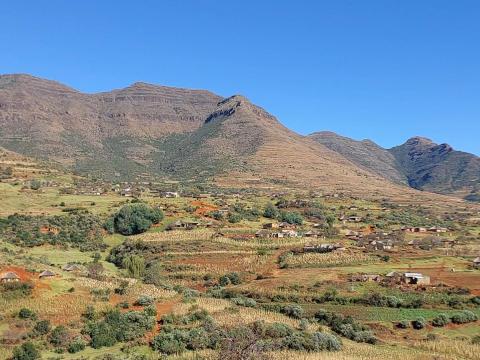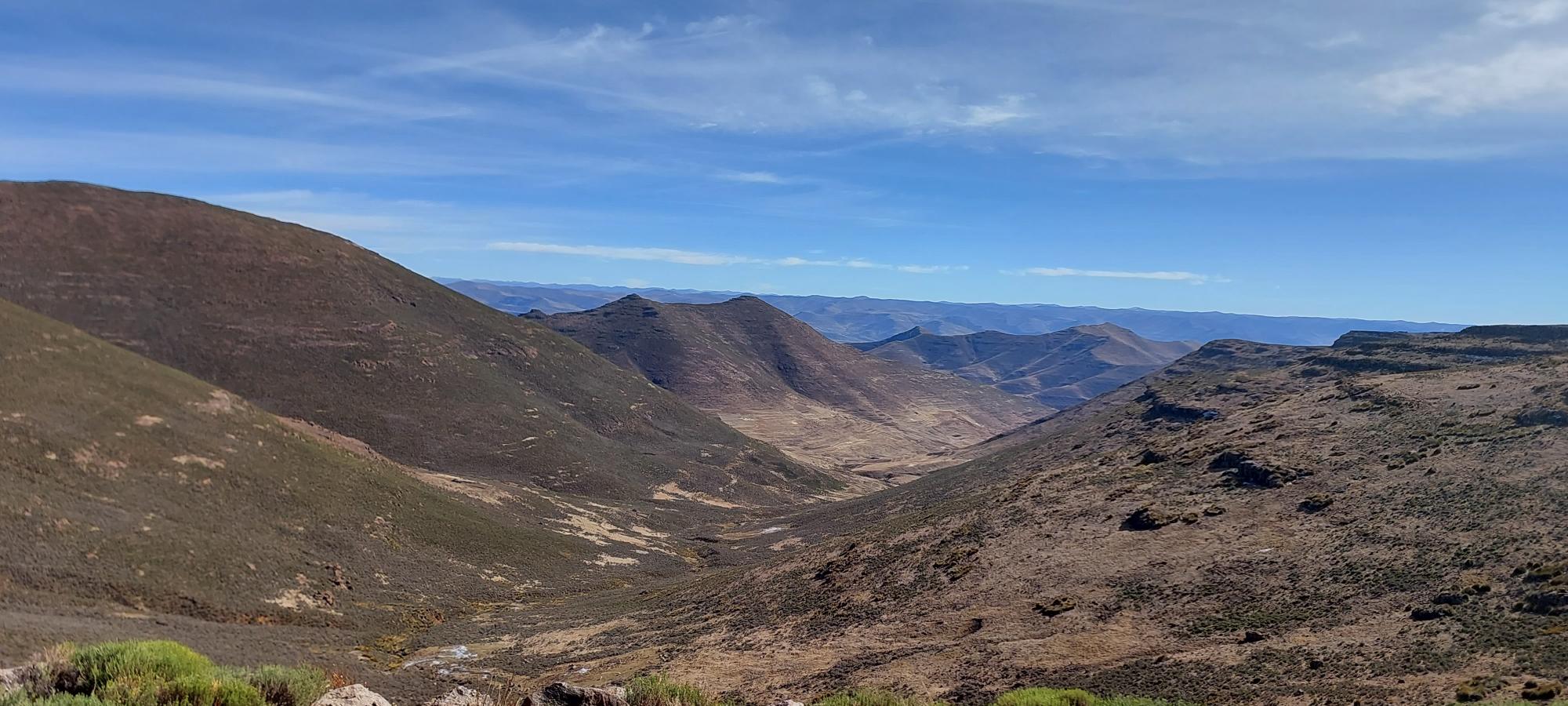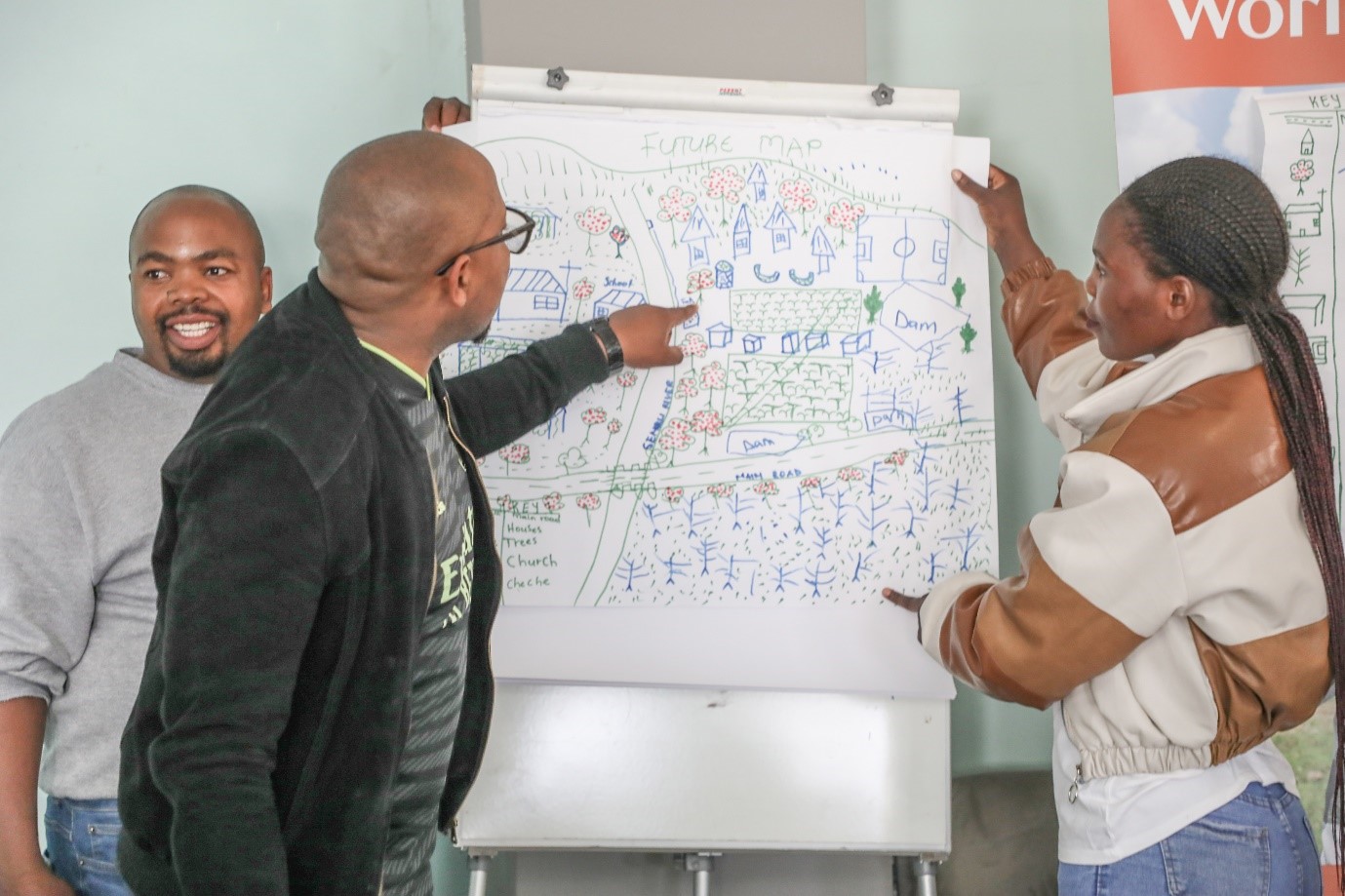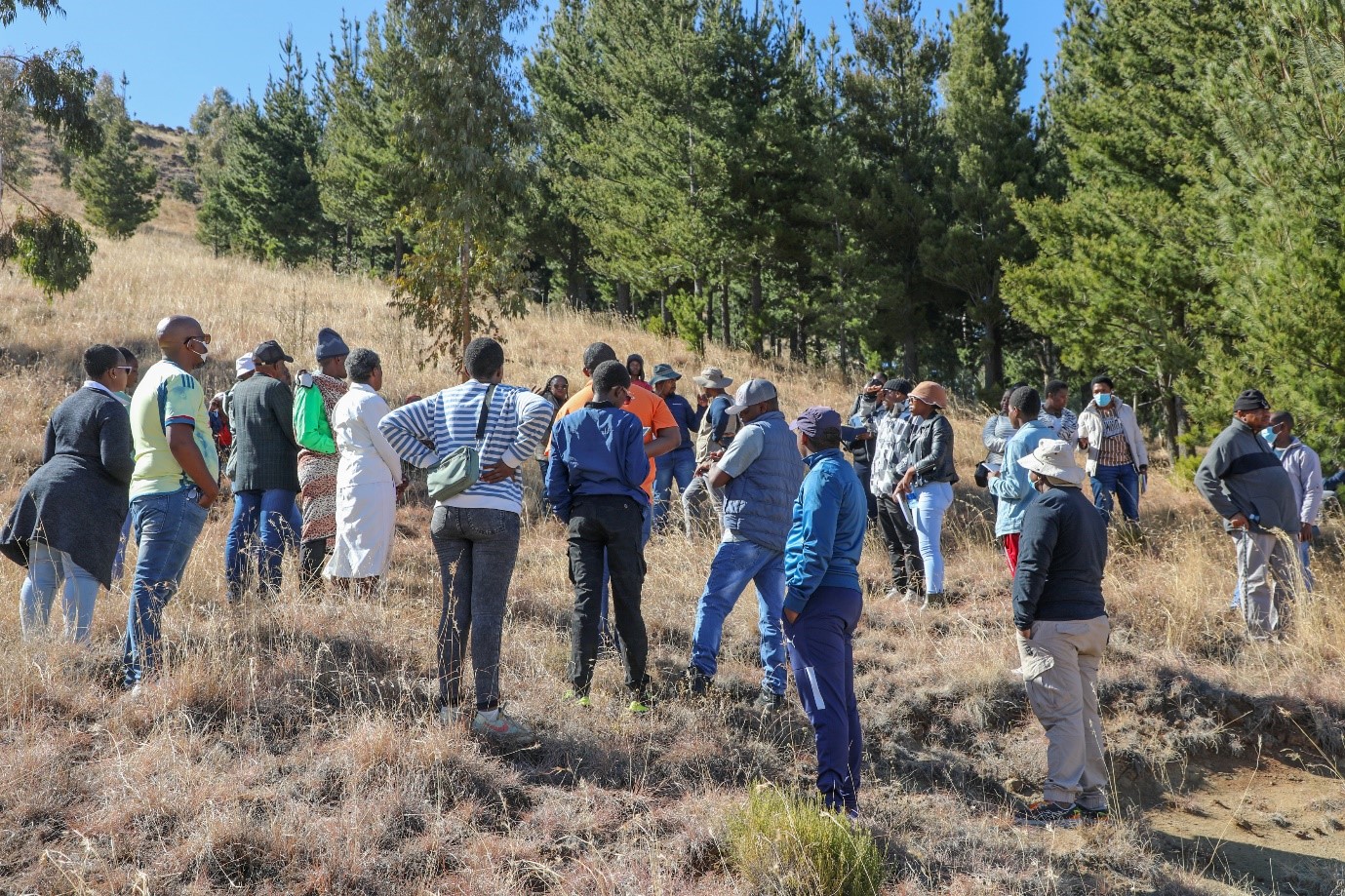Regreening Lesotho: Empowering Communities for Environmental Stewardship

By: Reentseng Phephetho, Communications and Digital officer
Climate change is a growing global challenge and is compounding land degradation. In Lesotho, a small, mountainous country landlocked country in southern Africa entirely surrounded by South Africa the impact of climate change is intensified by the country’s minimal forest cover, which stands at less than 2%. This environmental degradation has led to a cascade of issues, including reduced rainfall, soil erosion, loss of biodiversity, and declining agricultural productivity.

Lack of landscape restoration in Lesotho has had profound consequences. With the majority of the landscape lacking adequate forest cover, water resources have suffered significantly. Reduced rainfall and increased runoff have led to soil erosion, which in turn diminishes water quality and availability. The erosion also strips the soil of its fertility, undermining agricultural productivity, including negative effect on livestock production and contributing to widespread land degradation.
The loss of vegetation and biodiversity further exacerbates these issues, as habitats are destroyed, and ecosystems disrupted. This creates a vicious cycle of environmental degradation, where the loss of plant life leads to more severe soil erosion and further diminishes the land’s ability to support agriculture and sustain life.
World Vision International Lesotho, through the Faith Partnerships for Environmental Stewardship and Climate Action (ESCA) Project recognized the urgent need for concerted effort in climate action. This project aims to empower Faith Actors to contribute to household and community resilience, and child participation in, climate change adaptation and mitigation. It is in this context that the Regreening Communities Model was introduced, a strategy designed to enhance community resilience against the harsh impacts of climate change. The model is built on the premise that both individual and collective actions are essential to restoring landscapes and improving the resilience of households and communities.
What does World Vision’s Regreening Model look like?
The World Vision’s Regreening Model is guided by the following key and simple steps done collectively with the community:
- Mapping: Community consultation, awareness raising, and landscape mapping are the first steps. This involves engaging with the community to identify key areas for regreening and creating a shared understanding of the environmental issues at hand.
- Organize: The next step is to support or set up community collaboration structures. This ensures that there is a coordinated effort in addressing environmental challenges, with clear roles and responsibilities for all stakeholders.
- Plan: A regreening committee is then tasked with creating a regreening plan, which is validated with the community. This plan outlines specific actions and strategies for restoring the environment and is essential for guiding the community’s efforts.
- Monitor and Celebrate: As the regreening plan is implemented, it is crucial to monitor changes in the landscape, share successes, and celebrate the achievements of community champions. This helps to maintain momentum and encourages ongoing participation.
Regreen: Finally, the community implements and continually refines the regreening plan. This ongoing process ensures that the efforts remain relevant and effective, adapting to new challenges and opportunities as they arise.
Training and Community Engagement

To ensure the successful implementation of the Regreening Communities Model, World Vision International Lesotho recently conducted a training session for 35 participants, including faith leaders, area chiefs, and other stakeholders under the facilitation of Mclarence Mandaza, the Environment Sustainability and Climate Action Lead for World Vision Southern Africa. This training was both theoretical and practical, with participants engaging in group exercises to apply the model in their own communities.
As part of the training, participants also visited areas within Mokhotlong district where regreening practices have been implemented. This field trip provided valuable insights into the practical challenges and successes of environmental restoration efforts, helping participants to better understand how to apply these lessons in their own communities.
Lessons learnt
One of the lessons that emerged from the field visit was the social cohesion that regreening initiatives brings in the community through traditional leaders, faith leaders and community members working in conservation works including managing competing priorities in shared natural resources such as pasture land and forests. The training also highlighted that regreening goes beyond tree planting and conservation, encompassing grass conservation for pastures and soil erosion control.
A Collective Commitment to Environmental Stewardship
We are indeed grateful for this learning opportunity, and we understand better the work of faith leaders in leading the community to take care of God’s creation, the environment - Father Hlompho Hlaha
The response from participants has been overwhelmingly positive, with many expressing a renewed commitment to environmental stewardship. Father Hlompho Hlaha, a faith leader in Leribe and the ESCA champion who attended the training, remarked, "We are indeed grateful for this learning opportunity, and we understand better the work of faith leaders in leading the community to take care of God’s creation, the environment. I will definitely take these teachings and share them with the community I live in and be a leader in making sure that we regreen our environment."
Way forward towards regreening

World Vision’s Regreening Communities Model represents a significant step forward in the fight against climate change and environmental degradation. By empowering communities to take collective action, this initiative not only addresses the immediate challenges of climate change but also promotes long-term sustainable development.
As Mclarence Mandaza aptly stated, "Regreening is the whole community approach, every member has a role to play. Taking care of the environment is a collective effort towards fostering community resilience to climate change." This model highlights the importance of community involvement and the vital role that each individual can play in conserving the environment for current livelihood needs of children and future generations.
Regreening is the whole community approach, every member has a role to play. - Mclarence Mandaza
The Regreening Communities Model presents a promising approach to addressing Lesotho's pressing environmental challenges. By combining community engagement, faith-based leadership, and practical conservation techniques, this initiative offers a holistic solution to the intertwined issues of deforestation, soil erosion, and climate change impacts. The model's emphasis on collective action and local empowerment ensures sustainable, long-term results.
As Lesotho faces an uncertain environmental future, initiatives like World Vision's Regreening Communities Model are not just beneficial; they are essential. By restoring degraded landscapes, enhancing biodiversity, and improving agricultural productivity, this model paves the way for a more resilient and sustainable Lesotho, benefiting both current and future generations.